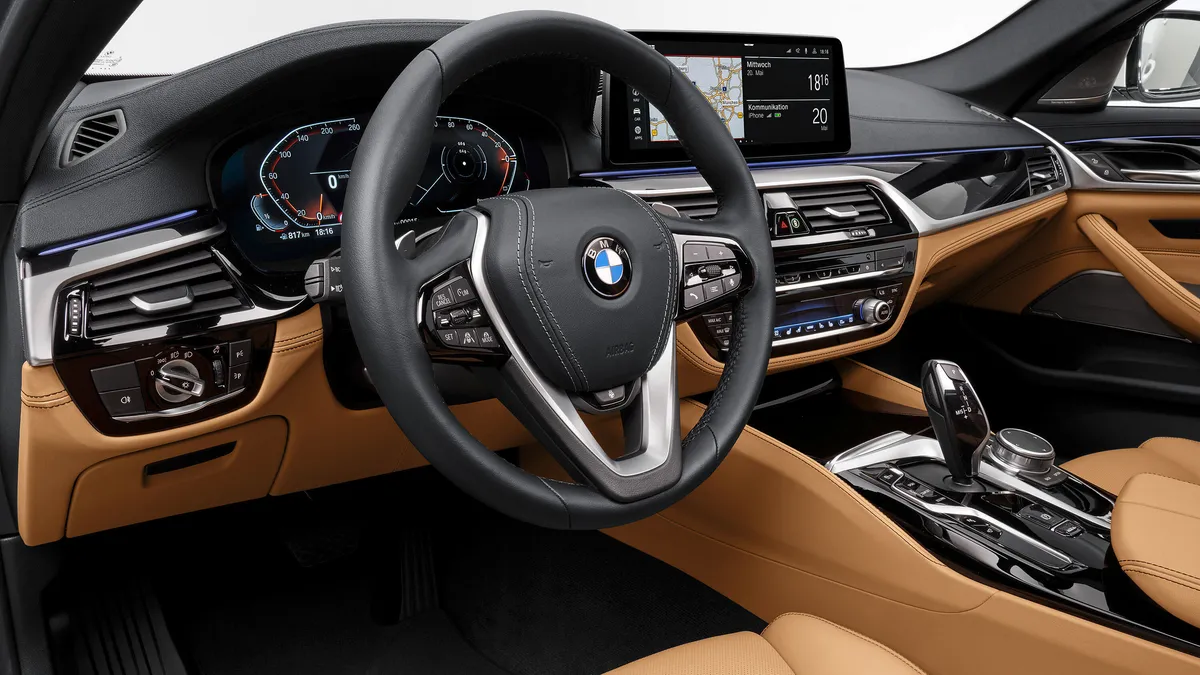Welcome to this episode of The Friday 5 with Steve Greenfield, Founder and CEO of Automotive Ventures, an auto technology advisory firm that helps entrepreneurs raise money and maximize the value of their companies.
The ‘Connected Car’
First up this week, I wanted to share a couple of observations on the Connected Car, and the implications on franchised dealerships.
But first up, a bit of history.
The Connected Car isn’t a new phenomenon.
Since 2014, a growing number of vehicles have featured embedded cellular modems, allowing them to connect to the internet.
In the 1990s, the introduction of onboard diagnostics led to the connected car. Vehicle connectivity back then was simply meant for drivers to quickly place emergency calls during an accident.
Fast-forward to the current day, and the vast majority of new vehicles are now sold with connectivity.
The promises of vehicle-to-vehicle (V2V), vehicle-to-grid (V2G), and vehicle-to-anything (V2X) offer very powerful use cases that will unlock value across the mobility landscape.
But, the impact on the aftermarket is uncertain and still needs to play out.
Of all passenger cars sold in the U.S., around 91% are connected. This number is expected to continue to grow over the coming years; researchers predict that 96% of all new vehicles shipped in 2030 will have built-in connectivity.
Vehicle connectivity enables a number of interesting use cases. But for today, I’ll focus on Over-the-Air updates (OTA) and the unbundling of vehicle features into subscription services.
 |
First up, Over-the-Air Updates (OTA)
Back in 2018, Consumer Reports panned the new Tesla Model 3 for having worse breaking dynamics than an F-150 pickup truck. A few days later, they retested the same car and found that the vehicle’s stopping distance had been reduced by nearly 20 feet. All without anyone touching the vehicle.
It’s been four years since, but the Tesla Model 3 incident really opened the eyes of the world to the power of software updates to vehicles via OTA.
Over-the-air (OTA) software updates to the vehicle promise the reduction of warranty costs, the increased completion rates for software-related recalls, the improvement of customer satisfaction by elimination of trips to the dealership for software upgrades or fixes, and the ability to upgrade functionality and add features to automotive infotainment systems over a vehicle’s lifetime.
According to IHS Automotive, total worldwide automaker cost savings from OTA software update events have grown to more than $35 billion in 2022 (with telematics and infotainment system updates comprising most of the savings).
Another consulting firm, ABI Research, reported that domestic automakers allocate about $20 billion annually in warranty reserves. While not all recalls can be fixed via an OTA update, ABI suggests that close to one-third of recalls can be addressed over the air, saving car OEMs at least $6 billion per year.
Subscription Services
Earlier this year, Ford, General Motors and Stellantis each stated their intent to generate over $20 billion in new, high-margin revenue from selling vehicle features via monthly subscriptions.
How might the automakers generate new subscription revenue? GM aims to collect up to $6 billion per year via usage-based insurance (UBI). BMW intends to allow consumers to choose between paying upfront for features like rear heated seats or simply paying by the month. Porsche has said that in the future drivers will be able to unlock 50 horsepower through their app. And Audi is exploring a future where their EV drivers who end up stranded at the side of the road with no remaining charge will be able to unlock 50 miles of battery range for a one-time fee.
Expect to see many of the automakers “unbundle” features as they release new models, focusing on billions of new revenue that will have very high-profit margins.
But, in order to get there, the automakers will need to redefine themselves as software companies as they start to design the “Software Defined Vehicle.” Recently Hyundai reported that they intend to spend $12.6 billion to develop a new operating system that will accommodate over-the-air updates.
It’s to be seen how successful the legacy automakers can navigate redefining themselves as software companies, while at the same time making the not-insignificant evolution from internal combustion engines (ICE) to electric vehicles (EVs). Some automakers may not survive attempting to make both of these changes simultaneously.
Questions Remain
A few questions remain regarding subscription services.
First, what will be the consumer appetite and willingness to pay for multiple subscriptions on a monthly basis for convenience and performance features that used to be included in the sale price of the car?
Second, when a consumer “unlocks” a vehicle feature post-purchase, how much of that revenue will be shared back to the dealership? Dealer Councils will need to actively negotiate with their automaker around future subscription revenue share.
Third, will the concept of unbundling vehicle features into monthly payments survive challenges in a court of law? Earlier this summer, a lawsuit was brought in New Jersey contesting such subscription fees as being illegal.
So What’s The Takeaway?
At this point, there are more questions than answers about how the increasing technological sophistication of the connected car will impact dealership parts and service revenues and profitability, and maybe more importantly how much of a slice of the billions of dollars worth of vehicle subscription revenues will be shared back to the dealers.
In any case, there’s surely a lot of change coming to the automotive space over the next few years.
Find out more about these trends and others in the latest edition of the Automotive Ventures Intel Report, available at AutomotiveVentures.com
Companies to Watch
Every week we highlight interesting companies in the automotive technology space to keep an eye on. If you read my monthly industry Intel Report, I showcase a few companies each month, and we take the opportunity here on the Friday Five to share some of those companies each week with you.
Numa
Numa offers dealers an AI-driven customer response platform that turns BDCs and Advisors into world-class communicators, using visibility + accountability + a healthy dose of AI superpowers.
The average dealership misses 1,500 calls and 500 appointments every month in their Service Department and BDC. With Numa, teams capture every RO.
The reason that I love Numa is it automates the process of customer interaction and helps dealers provide a much better consumer experience while simultaneously driving additional revenue to dealerships.
You can check out Numa at www.Numa.com.
Partsimony
Partsimony allows you to connect and collaborate across your manufacturer network. They help hardware companies turn designs into products with less time, capital, and frustration than ever before.
Partsimony’s intelligent supply chain platform combines data-driven insights with deep industry expertise.
The reason that I love Partsimony is they help make the automaker and supply chain relationship much more efficient and streamlined.
You can check out Partsimony at www.Partsimony.com.
——
So that’s your weekly Friday 5, a quick wrap-up of the big deals in the automotive technology space over the past week.
If you’re an early-stage automotive technology entrepreneur looking to raise money, or an entrepreneur who is trying to decide whether and when they should raise money or sell their business, I’d love to speak with you.
Thank you for tuning into CBT News for this week’s Friday 5, and we’ll see you next week!
Did you enjoy this week’s episode of the Friday 5? Please share your thoughts, comments, or questions regarding this topic by connecting with us at newsroom@cbtnews.com.
Be sure to follow us on Facebook, LinkedIn, and TikTok to stay up to date.
While you’re here, don’t forget to subscribe to our email newsletter for all the latest auto industry news from CBT News.







